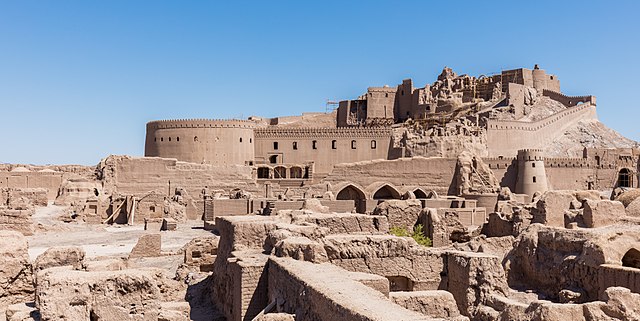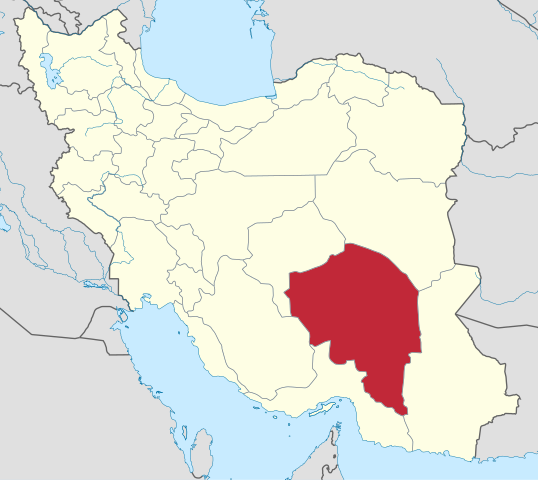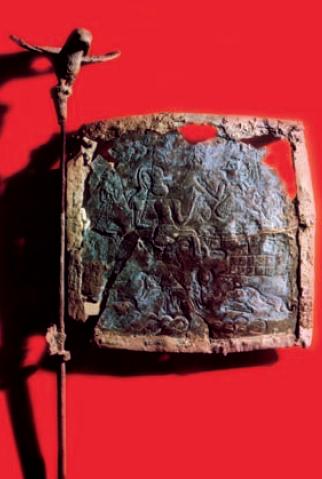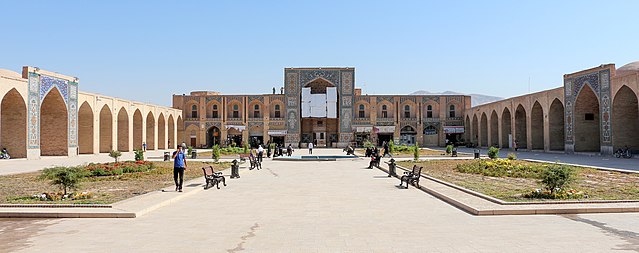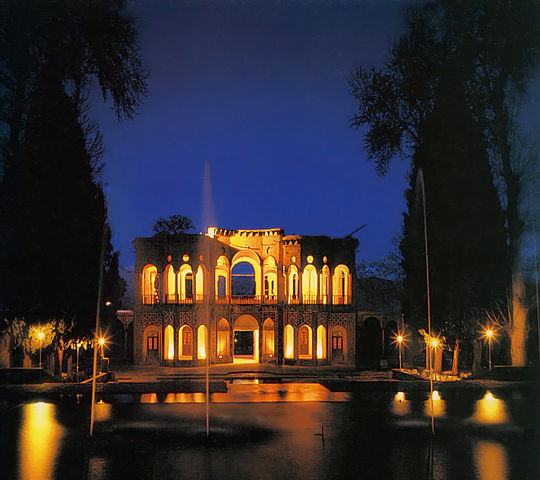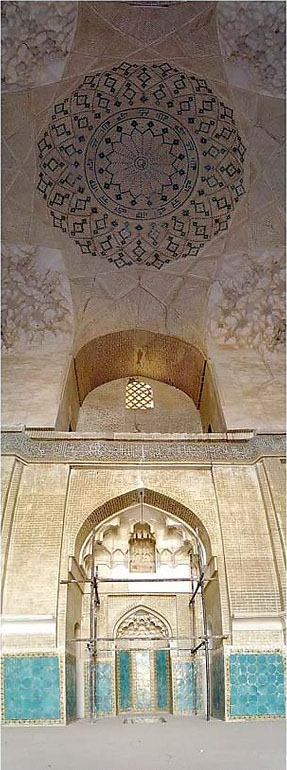
| KERMAN PROVINCE
Bam Fortress (2016)
Kerman Province and its counties Country
: Iran
Kerman Province (Persian: Ostan-e Kerman) is the largest province of the 31 provinces of Iran. Kerman is in the southeast of Iran with its administrative center in the city of Kerman. In 2014 it was placed in Region 5. Mentioned in ancient times as the Achamenid satrapy of Carmania, it is the largest province of Iran with an area of 183,285 km2 (70,767 sq mi), that encompasses nearly 11 percent of the land area of Iran. The population of the province is about 3 million (9th in the country).
History and culture :
Bronze flag, Shahdad Kerman, Iran, 3rd millennium BC Kerman province is considered a paradise for palaeontologists because of an abundance of vertebrate fossils from different geological eras. Fossils include Placodermi, jawed and jawless armoured fish dating back to the Devonian period (395 to 365 million years ago), dinosaurs (195 to 66 million years ago) and mammals from the Tertiary period (ranging from two to seventy million years ago).
The history of human settlements in the territory of Kerman dates back to the 4th millennium BC. This area is considered as one of the ancient regions of Iran and valuable historical vestiges have been discovered here. Jiroft is an example, where a previously unknown settlement dating back to around 2500 BC has been established by archeologists. Kerman has an abundance of historical sites and landmarks, 283 in total, according to Iran's Cultural Heritage Organization. Ancient abandoned citadels such as Arg-e Bam and Rayen Castle have been preserved in the desert for 2,000 years.
Historical documents refer to Kerman as "Karmania", "Kermania", "Germania", "Carmonia", and "Žermanya", which means bravery and combat. Geographers have recorded Kerman's ancient name as "Go'asheer" (Bardesheer).
Geography :
The altitudes and heights of the province are the continuation of the central mountain ranges of Iran. They extend from the volcanic folds beginning in Azarbaijan and, by branching out in the central plateau of Iran, terminate in Baluchestan. These mountain ranges have brought about vast plains in the province. The Bashagard and Kuhbonan Mountains are the highest in this region and include peaks such as Toghrol, Aljerd, Palvar, Sirach, Abareq and Tahrood. Other ranges that stretch out from Yazd to Kerman and Challeh-ye-Jazmoorian include high peaks like Hazaran 4501 meters above sea level, Kuh-e Shah 4402 meters, Joupar, Bahr Aseman and Khabr mountain in Khabr National Park and others.
Most of the province is largely steppe or sandy desert, although there are some oases where dates, oranges (said to be the best in Iran), and pistachios are cultivated. In antiquity "Carmanian" wine was famed for its quality [Strabo XV.2.14 (cap. 726)]. The province is dependent on qanats (underground water channels) for its irrigation. In the central parts, Mount Hezar is the highest peak, 4501 meters above sea level.
Kerman is prone to natural disasters. A recent flood for example, unearthed the archeological ancient city of Jiroft, in the south of Kerman province. Arg-é Bam on the other hand, the world's largest adobe structure, was destroyed in an earthquake in December 2003. On February 22, 2005, a major earthquake killed hundreds of residents in the town of Zarand and several nearby villages in north Kerman.
Counties
:
Climate
:
Demography :
Ganjali Khan Complex in Kerman Most of the population of Kerman are Persians, and Shi'a Muslims. There is a minority of Baloch population living in the south of Kerman Province and are predominantly Sunni. Kerman also has a small but culturally significant Zoroastrian minority.
In 2011 the population of the province was 2,938,988 (1,482,339 male; 1,456,649 female) in 786,400 households. 1,684,982 lived in urban areas, 1,242,344 in rural vicinities and 6,082 accounted as non-residents.
In 1996, 52.9% of Kerman's population lived in urban areas, and 46% in rural vicinities, the remaining 1.1% accounted as non-residents. In 2006 urban population made 58.5%, in 2011 this rate decreased by one percent. The city of Kerman (2011 population: 621,374) embraces about 80% of the urban population, being the most developed and largest city of the province.
Shazdeh Garden, Mahan, Kerman
Attractions :
Economy
:
Malek Mosque, Kerman, Iran
Education :
•
Jiroft University
https://en.wikipedia.org/ |
